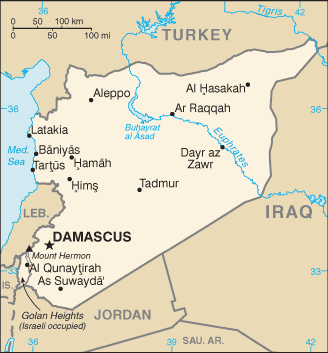Top US commander in Iraq Lt. Gen. Stephen Townsend dismissed the idea that the current plans for US escalation in Iraq and Syria would result in the deployment of “large numbers” of additional US combat troops. He refused to say what his recommendation was, but insisted that the current troops levels are “working” and that he didn’t see a need for large additional deployments.
 Earlier this week, the Pentagon delivered a series of “options” all designed around the idea of rapidly defeating ISIS. The plans were not made public, but reportedly included plans for thousands of additional combat troops to be sent to Syria as part of the operation.
Earlier this week, the Pentagon delivered a series of “options” all designed around the idea of rapidly defeating ISIS. The plans were not made public, but reportedly included plans for thousands of additional combat troops to be sent to Syria as part of the operation.
It is unclear whether Townsend is disputing this plan, or simply doesn’t consider thousands of troops in Syria to be a “large number” in the grand scheme of things. The US currently has around 300 troops in Syria, and in Iraq the deployments are officially around 5,000, and unofficially around 6,000.
The plans are also expected to see a significant increase in US military aid to the Syrian Kurdish faction the YPG. Turkey has objected to the idea, but Townsend reiterated today that the assault of the ISIS capital of Raqqa would involve Kurdish fighters.
While the momentum in Iraq is decidedly against ISIS, in Syria the group still holds a large amount of territory, and several months into the US-announced assault of Raqqa, Kurdish forces have only managed to “surround” the northern part of the city, which is likely the source of President Trump’s call for plans for “rapid” defeat of ISIS, and also that this involves greatly increasing the number of US troops in Syria.
Townsend may ultimately be right about Iraq itself, with little apparent need for additional US deployments there right now, but it’s hard to imagine that President Trump’s promised escalations aren’t going to involve a showy deployment of combat troops into the region, likely in Syria, to try to get some quick results.
This is doubly true with Trump planning to establish “safe zones” in Syria, something the Pentagon has long warned would require a substantial number of US troops to defend. Though details on the form the safe zones will take is uncertain, this too points to large deployments in Syria being likely.





Could the author please explain to us the legal basis, if any, for US troops in Syria? Unless there is some kind of Syrian government consent (which I have never read about here or anywhere else), US sending even one “troop” into Syria would seem to be a clear violation of the UN Charter.
AWC does not acknowledge that ISIS and AQ/AN et al are US government proxies.
That’s kind of a meaningless statement. AWC does not have some kind of party line either way on ISIS, AQAN et al.
I think that if Trump was a Dem then Raimondo never would have been able to support him. And for sure he would have left his side by now.
I’ve been around too long to not see how US domestic politics are too important to ignore for those who call themselves antiwar. I’ve seen too many times, Americans oppose the other party’s wars and support their own party’s.
I mention this because it’s simply breaking the back of the antiwar effort here on this site. We see examples every day and support/orropsition to Sessions is the current one.
No criticism of Jason Ditz intended. We couldn’t have a more prolific and solid antiwar writer.
Jason Ditz has shared many reports of supplies going to IS / AQ that were apparently dropped by US or coalition aircraft. Other authors have discussed the growing body of evidence that the USG either created IS or let IS grow with the idea it would be useful in the fight to remove Assad. Any informed person knows the USG created AQ in Afghanistan to give the Soviets their “own Vietnam” and AWC has certainly shared that on many occasions. So I’m not sure what it is that you’re claiming AWC isn’t divulging.
Perhaps the several Senate resolutions on terrorism passed after 9/11.
That would imply, however, that the Government of Syria is in league with ISIS.
Everything is a lie that comes out of a general’s mouth.
February 28, 2017 Video: War on Syria: Manufactured Revolution and Fake Media Narrative
Canadian independent journalist Eva Bartlett is the object of a smear campaign by Canada’s mainstream media. Listen to what she has to say and then decide who is telling the truth. The mainstream media denies the existence of terrorists linked to Al Qaeda. According to mainstream sources, there were no terrorists in Aleppo.
http://www.globalresearch.ca/war-on-syria-manufactured-revolution-and-fake-media-narrative/5577303
A very small voice in the wilderness of lies and support of US aggression. Canada’s media and government is sh-t scared of departing from the US party line.